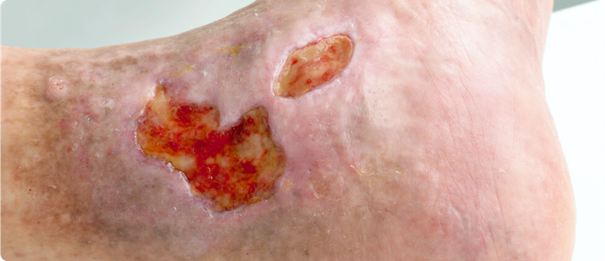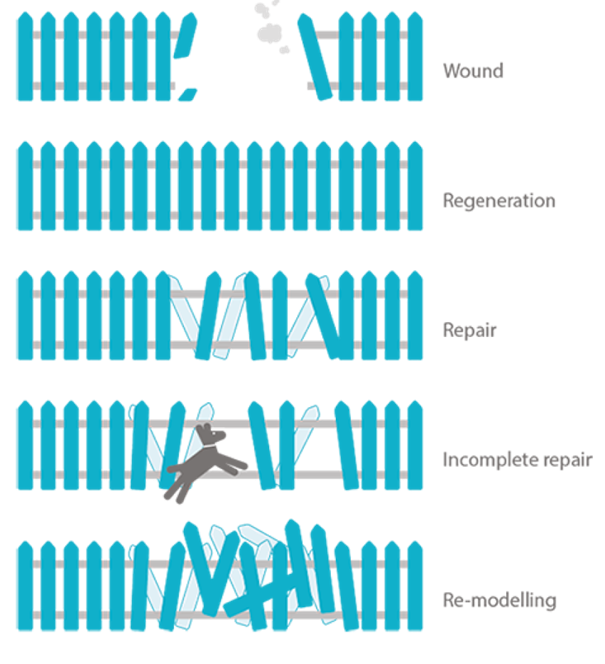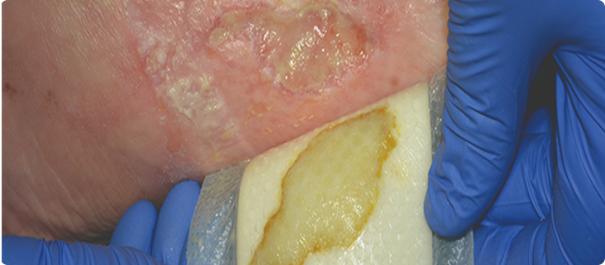Get full access with a free account
Benefits of the Coloplast® Professional Educational platform
- Get full access to all educational content, events and resources
- Track your progress
- Share content with your collegues
- Share supporting material with your patient
Introduction
This article dives into the realm of wounds and their healing processes. It begins by defining what constitutes a wound and how the body's innate mechanisms kick into action when the skin is injured. From tissue regeneration to tissue repair, it explores the intricacies of wound healing while highlighting the distinct stages involved.
What is a wound?
The skin is our body’s most accessible organ. As such, it’s very easy to damage or wound it.3 When you injure the skin, the body tissue loses its continuity. This can happen as the result of trauma, infection or some pathological process, such as inflammation.6
When the skin is injured or damaged, a wound is created. Once this happens, the body immediately begins to repair itself. It does this by re-establishing tissue integrity in order to restore the skin’s barrier function.4

Tissue regeneration
Tissue regeneration is when the body replaces damaged tissue by replicating identical cells. This is the ideal healing method. The regenerated tissue has the same function as before, and the skin resembles its original appearance. Unfortunately, the body can only regenerate certain cell types, such as epithelial cells*.6

Tissue repair
Tissue repair is when the body repairs damaged or destroyed dermal or subcutaneous tissue. However, in this case, the repaired tissue loses its specialized function and original structure. This is a more complicated process, which causes scarring and changes the skin’s appearance.
Evidently, wound healing is a very sophisticated process that follows a set sequence of events.2 In the next section, we’ll take a look at the four stages of wound healing.
Did you know?
The amount of exudate, or wound fluid, increases during the inflammatory stage. This helps to cleanse the wound and provide a moist environment that maximises healing.11,12 However, if a wound starts producing too much exudate, this can slow down the healing process.12,13 To learn more about wound exudate and how to manage it, read this article.

How long does it take for a wound to heal?
Wounds can be divided into two categories: acute and chronic wounds. Acute wounds repair themselves quickly and with minimal complications. If a person is healthy, an acute wound should heal within three weeks. In such cases, re-modelling normally occurs within the next year or so. However, if a wound gets stuck in one of the four healing stages, it might become hard-to-heal or chronic.13 Finding the right treatment for chronic wounds can be challenging. Research shows that finding the right dressing is a key part of effectively managing chronic wounds. You should choose the dressing based on an assessment of the wound and its fluid, or exudate. If you’re working with a patient with a chronic wound, your goal should be to choose a dressing that helps create an optimal healing environment.
An effective dressing should:
- conform to the wound bed; have antimicrobial properties;
- absorb excess exudate from the wound bed;
- protect the wound edges and periwound skin;
- maintain a moist healing environment;
- be comfortable and cost-effective; and
- be easy for the patient to remove and care for.
